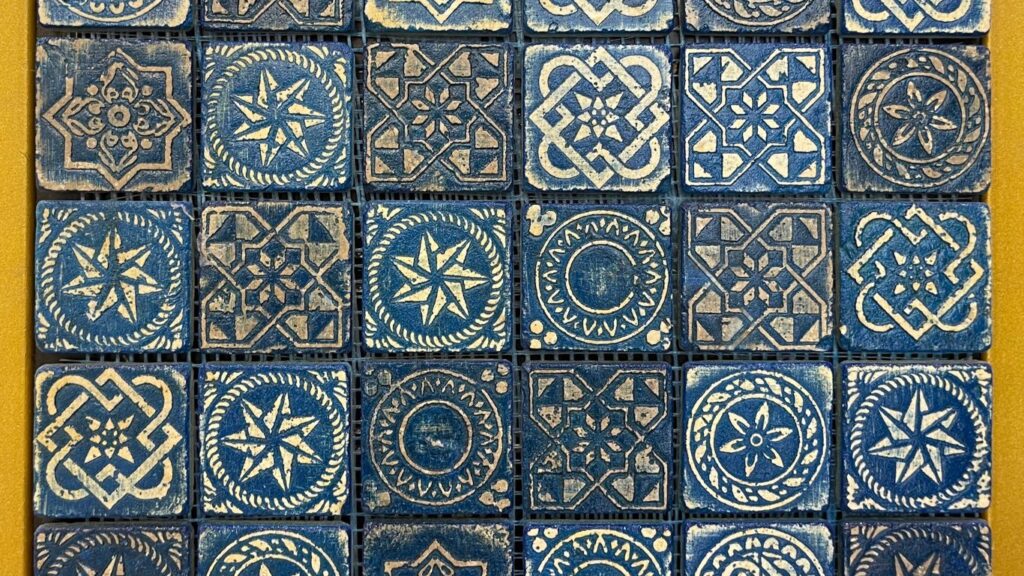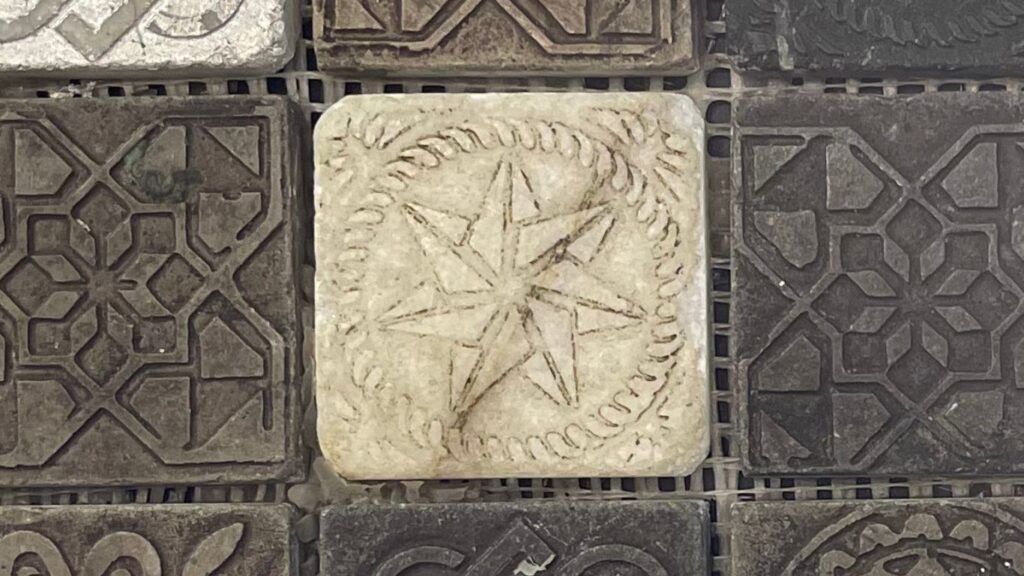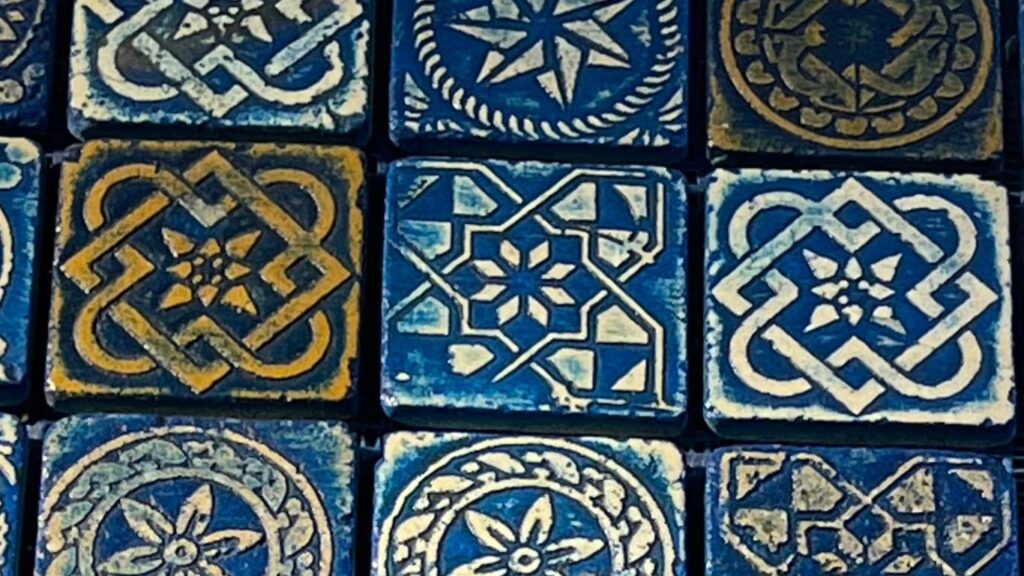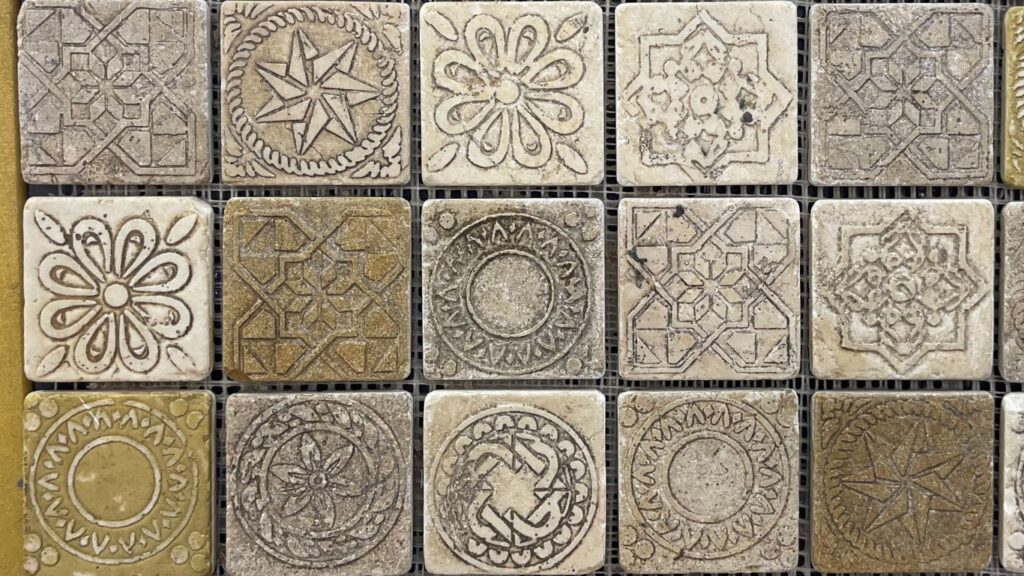If you’ve ever traveled to the Middle East or even just seen photos, you’ve probably noticed the stunning mosaic tiles that adorn everything from fountains to doorways. Here in Cairo, traditional tile designs are everywhere—in homes, shops, and historic buildings—and each tile feels like a small masterpiece. These designs are often complex but beautifully harmonious, featuring geometric patterns, intricate overlapping lines, and sometimes a hint of floral motifs, all without using any figures or animals. It’s a style that has evolved over centuries, blending influences from Islamic, Persian, Greek, and even Celtic art.

Mosaic tiles are a central part of Middle Eastern aesthetics and craftsmanship, and they’re loved not just for their beauty but for the precision and balance they bring to a space. Unlike many Western designs, which often feature realistic images of people, animals, or landscapes, these tiles are entirely non-figurative. Instead, they rely on geometric shapes, symmetry, and repetition to create something truly mesmerizing. For beginner artists looking to explore watercolor, this non-figurative approach is a wonderful place to start—especially if you want to practice without feeling pressured to make your art look “realistic.”
Why Mosaic Tile Designs are Perfect for Watercolor Beginners
One of the best things about using mosaic tile designs as creative inspiration is that they’re naturally loose, abstract, and open to interpretation. Watercolor beginners often worry about getting the details “just right” or struggle with capturing realistic depth and perspective. With mosaic-inspired art, you can let go of those expectations. These designs let you focus on basic shapes, lines, and colors, which are much more forgiving and allow for a relaxed, meditative approach. You don’t need to create a perfect replica; instead, you can use the patterns as a loose guide to explore color, shape, and mark-making.
Three Easy Watercolor Projects Inspired by Traditional Tile Designs
Here are three beginner-friendly watercolor ideas inspired by the types of mosaic designs commonly found in Middle Eastern art. These projects let you experiment with shapes and colors while capturing the essence of these beautiful tiles!
1. Overlapping Triangle Stars

- Start by sketching a few triangles overlapping each other to form a star shape, like the seven-pointed stars you might see in some mosaic tiles. Don’t worry about making them perfectly even—part of the charm of watercolor is its softness and unpredictability.
- Once you have a basic outline, fill each triangle with a different shade of the same color family (blues, greens, or earthy tones work beautifully).
- Use a wet-on-wet technique by dropping color into a wet area and letting it spread. This will give your star a dreamy, blended look that’s unique to watercolor and perfect for capturing the layered feel of mosaic tiles.
2. Flowing Interlocking Curves

- This project is inspired by the intertwining lines you might see in traditional Islamic art, which often resemble Celtic knots or Greek keys.
- Start by lightly sketching a few parallel curves that loop around each other. Think of it like doodling loops or waves that connect across the page.
- Use a different color for each curve and layer them with a transparent wash to create a sense of depth. Don’t be afraid to let the colors overlap slightly—that’s part of the fun with watercolors!
- To finish, add a few dots or tiny circles in the spaces where the curves meet, giving a bit of texture and visual interest to the piece.
3. Simple Geometric Grids with Soft Colors

- One of the easiest ways to capture the spirit of mosaic tiles is by creating a simple grid of shapes, like squares, diamonds, or hexagons. These grids are common in tile designs, where they often feature bright colors and repeating patterns.
- Lightly sketch a grid of shapes across your paper, keeping the lines faint so they don’t overpower the colors.
- Choose a color palette of three or four harmonious colors—warm tones like pinks, oranges, and yellows work wonderfully together, as do cool tones like blues and greens.
- Paint each shape with a different color, letting the paint spread slightly beyond the lines for a soft, loose feel. You can even leave a few shapes unpainted for an airy, minimalist look.
Give it a Go and Share Your Artwork!
If these projects inspire you to pick up a paintbrush, I encourage you to give them a try. Mosaic tile designs are the perfect excuse to practice and experiment, without any pressure to make a “perfect” painting. Plus, you’ll get to enjoy a little piece of Middle Eastern culture right from your own art space! Once you’re done, I’d love to see your creations. Post them on our Facebook group or share on our Patreon Community Chat — we can’t wait to see how everyone interprets these beautiful patterns in their own unique way. Happy painting!